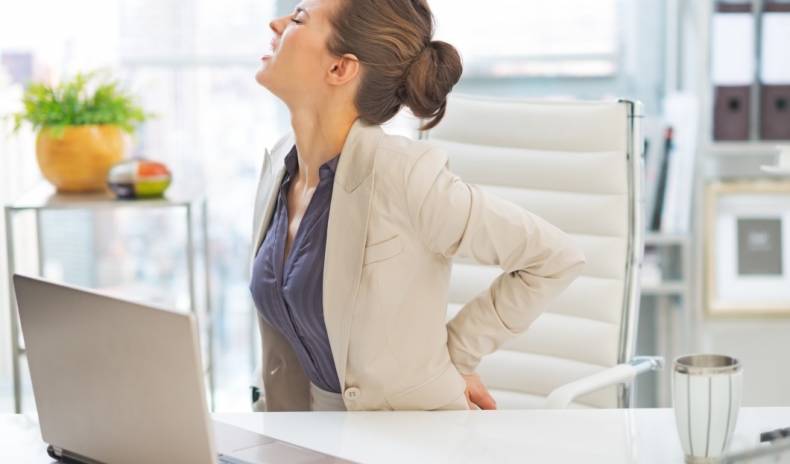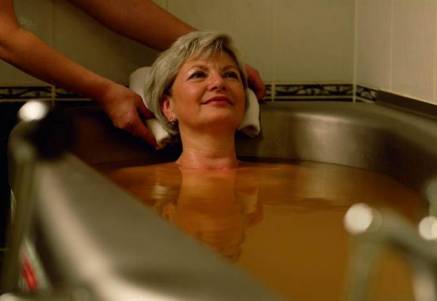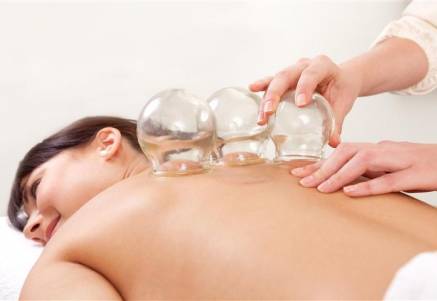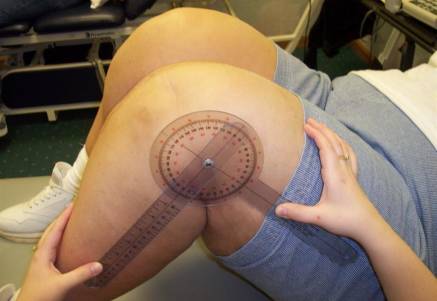The primary cause of back pain is as old as humanity itself. It is the fact that we were the only beings to straighten up. With a straightened back, new and more demanding requirements for stability and spine function emerged. Today’s frequent back pain that’s difficult to treat is just a consequence of this rapid change. The most delicate area of the spine has become the disc between the last lumbar and first vertebrae — the entire weight of the upper half of the body acts on a coin-sized surface here.
The reason for the difficulties is our lifestyle. We spend more and more time sitting and we move less. The majority of problems have their base in bad posture while sitting and standing and flabby muscles of the abdomen that fail to provide sufficient support to the spine.
Back pain is not just about the spine
In connection with back pain, most people think of the spine. But we must not forget that we have ligaments, joints, muscles, skin, subcutaneous tissue, nerves, and more on our back. All of this is linked together. And underneath there are all the internal organs. The pain of these organs can manifest in the back. Back pain occurs in a variety of conditions — from gynaecological or vascular problems to oncological ones. Causes of the pain are also acquired or congenital changes in the spine: body posture, round back, consequences of accidents as well as the tear of intervertebral discs, their prolapse or even disintegration.
Muscles
Back pain has a large number of causes that often overlap. The most common is imbalance of the muscles that surround the spine, support and protect it. Treatment of these problems is mainly a speciality of rehabilitation physicians.
Muscles are important for both support and movement. They practically never work alone because they are connected. In addition, some work in certain movements against each other, as antagonists. This means that one will loosen so another can stretch or shrink. Very important for support is the joining of pelvic muscles and back muscles of the abdomen and lower limbs. If we have weak muscles of the abdomen or pelvic floor, or if we do not stand firmly on our legs, be they flat or somewhat weakened, the back muscles are strained in all movements excessively until they get into a state of constant tension.
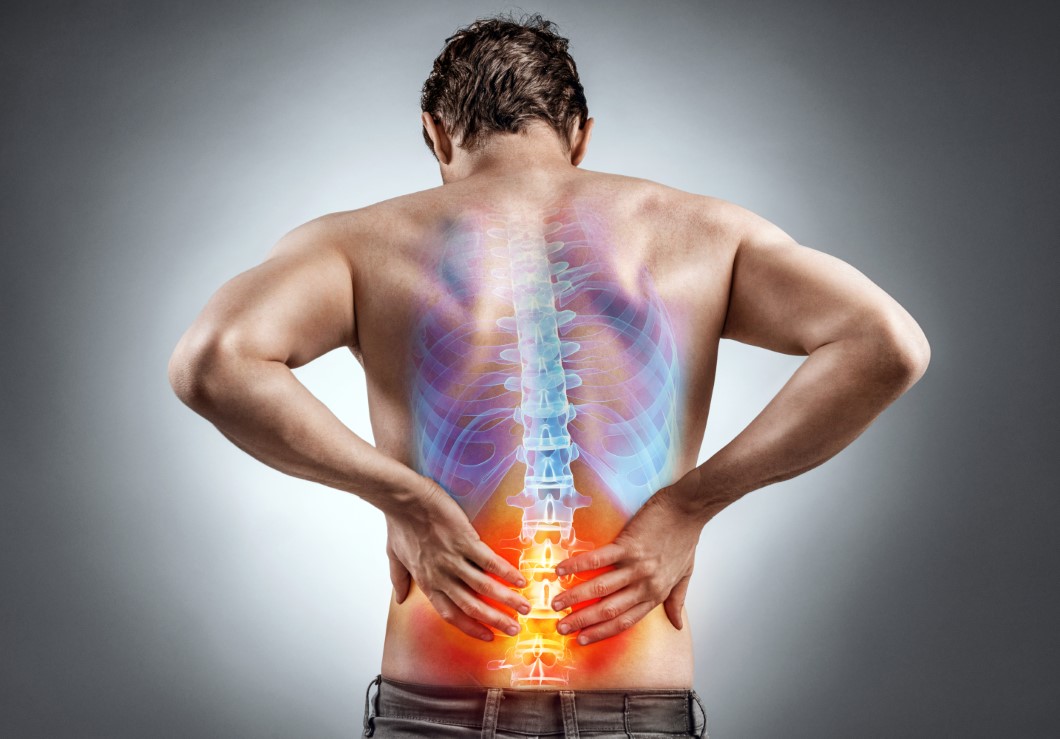
Acute and chronic pain
Back pain can be sudden (acute) or long-term (chronic). Acute are all cases where pain does not last for more than three months. We speak of chronic back pain when it lasts for more than three months or if acute pain occurs at least twice a year.
Acute pain almost always has a clear cause. Sudden, unexpected, and unusual pain in any part of the back, which is not a mere puncture due to poor stretching of the back or limb, is always a reason to visit a doctor. Mechanical pain is mostly associated with movement or the impossibility of movement — staying in one position. In chronic pain, practically always higher centres in the brain are somehow damaged — the thalamus, the somatosensory cortex, the limbic system and the cortex of the anterior lobe of the brain. Under normal circumstances, this is where the pain signal is being processed.
The rheumatic type of pain is characterized by night or morning pain. This makes people wake up early in the morning, forcing them out of bed. Often, pain in other joints, fatigue etc. can be added to it. This type of pain is associated with rheumatic illness and more than just rehabilitation methods is necessary to overcome it.
What hurts most
Back pain can be organic — with a palpable cause or function, we cannot see it or show it on an X-ray image or in any other way. Organic causes are inflammations, tumours, changes in wear — these occur after the thirtieth year of life, they can form cervices that narrow the spaces where the nerves go.
Discs begin to degenerate from 15 years. After turning 50, every second person suffers from back pain and after their 60s, 90% of people are affected. Sometimes the back pain occurs even as a result of difficulties not connected to the spine. These include leg defects and flaccid muscles of the back and abdomen. Another cause is persistent stress and depression.
Back pain can be associated with gallbladder disease, kidney, pancreas, gynaecological organs, etc. Another group of possible problems is associated with degenerative changes such as disc wear, vertebral growth, osteoporosis or bone degeneration, arthritis or the Bechterew’s disease which is, besides pain in the lower spine, often accompanied with chest pain, especially during deep breathing.
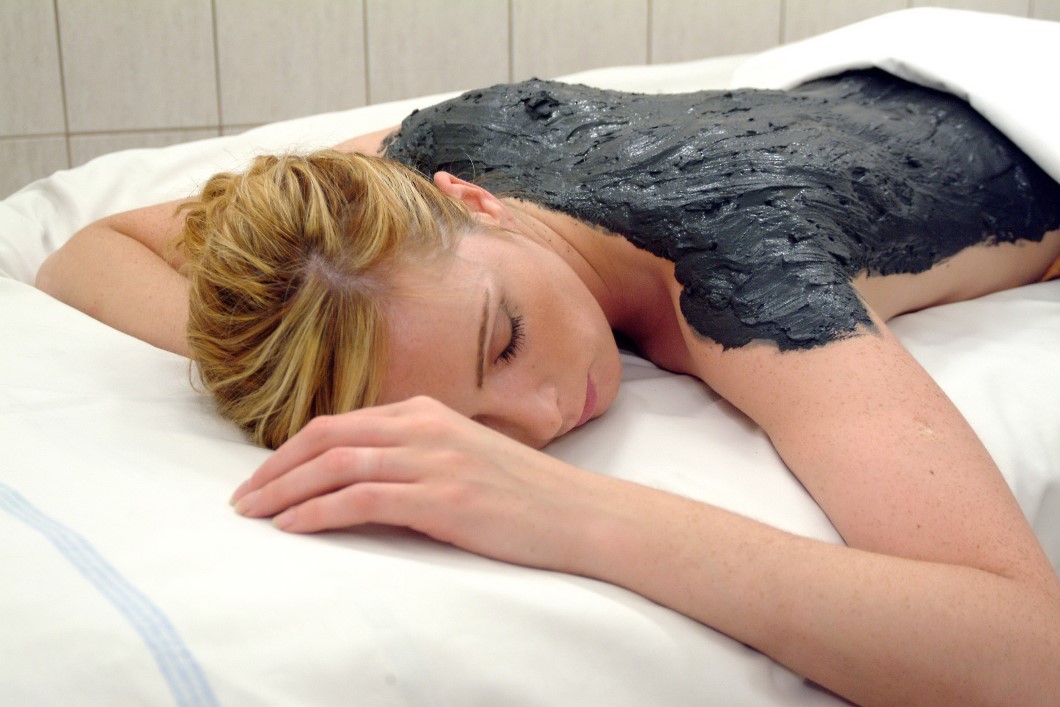
Rehabilitation
Rehabilitation treatment involved a number of methods. A specialist will recommend a rehabilitation plan. This almost always begins with individual therapy, and then later group therapy. Physical education is the most important part of the treatment. The basis is for muscle groups to balance each other. To strengthen the weak muscles and relax the muscle tense. An important factor is breathing. Exercises must be regular — every day for several months.
With strong pain and high muscle tension, exercise alone is not enough. Physiotherapists will release individual joints and stretch muscles. Reflexively, it affects the whole movement system in a different way. Some techniques hurt, but they are effective. Physiotherapists will also teach you how to sit properly, get up from bed, bend, carry a burden etc.
Treatment
The most famous is probably heat treatment — treatment used in many spas programs (peat, peloids). These natural substances store heat and gradually release it. Cold treatment is based on a similar principle. It is used for treatment with ice, cold water or cold air. Cold is used in acute conditions, sometimes combined with heat.
Electricity treatment has a great tradition. Streams are used to both relax and stimulate the muscles. Ultrasound produces micro-massage of the tissues, producing heat. However, it cannot be used with all people in all places — certainly not directly on the nervous tissue.
Spa treatment (balneotherapy) involves the use of all possible methods. Many spas also use healing mud and radioactivity. It is necessary for all the procedures and favourable climate to work for at least three weeks in spas.


